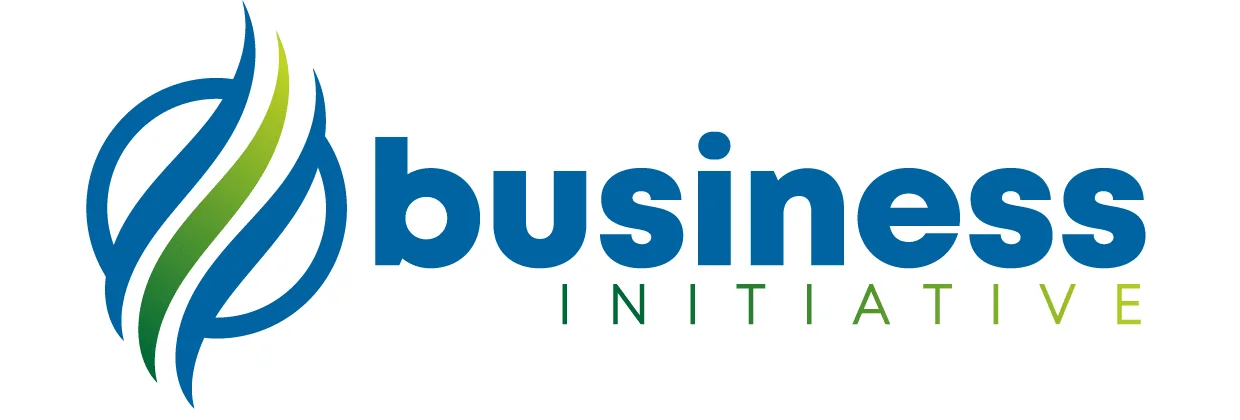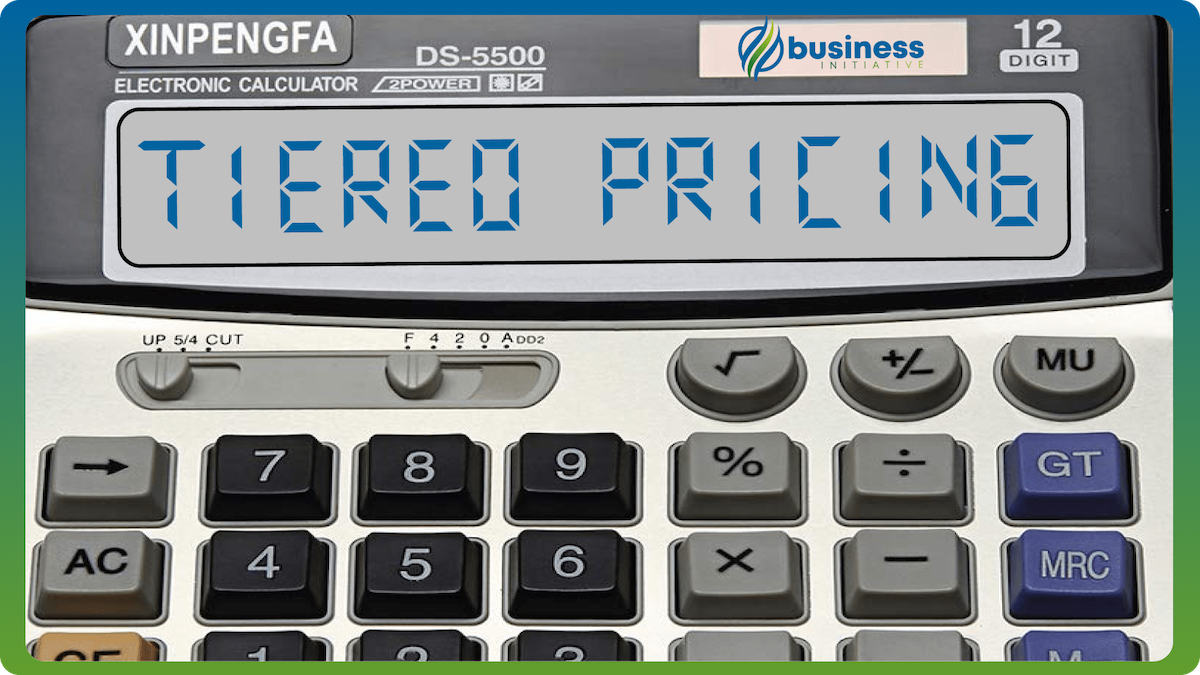🎯 Struggling to Find the Perfect Pricing Strategy?
Calculate your tiered pricing revenue potential, analyze profitability across customer segments, and discover the optimal pricing structure that maximizes your business growth.
 Key Takeaways
Key Takeaways
- Tiered pricing captures 15-30% more revenue than single-price models
- 3-4 tiers provide optimal choice without overwhelming customers
- Clear value differentiation between tiers drives customer upgrades
- Regular pricing analysis identifies most profitable customer segments
- Strategic tier positioning creates natural upgrade paths
Tiered Pricing Revenue Calculator
📊 Calculate Your Tiered Pricing Revenue
Enter your pricing tiers to analyze revenue potential, profitability, and optimization opportunities
📈 Business Metrics (Optional)
How Tiered Pricing Revenue Calculation Works
Our calculator uses proven mathematical models to analyze your pricing strategy:
🔢 Core Calculations
- Monthly Revenue = Price per Tier × Customers per Tier
- Annual Revenue = Monthly Revenue × 12
- ARPU = Total Revenue ÷ Total Customers
- Profit Margin = (Revenue - Costs) ÷ Revenue × 100
📊 Advanced Analysis
- Tier Performance Scoring based on revenue contribution and customer distribution
- Price Optimization using 2-3x multiplier industry standards
- Customer Segmentation analysis across pricing tiers
- Profitability Assessment including CAC and support costs
🎯 Scoring Methodology
Our overall score (0-100) evaluates:
- Tier Count (25 points): 3-4 tiers optimal
- Price Differentiation (25 points): 2-5x ratio between tiers
- Revenue Performance (25 points): ARPU benchmarks
- Profit Margins (25 points): Industry standards
Understanding Your Tiered Pricing Results
🔍 Key Metrics Explained
Total Annual Revenue
- Combined revenue across all pricing tiers
- Indicates overall market capture potential
- Compare against industry benchmarks for your sector
Average Revenue Per User (ARPU)
- Critical metric for subscription businesses
- Higher ARPU indicates better value capture
- Industry averages: SaaS ($100-2000), E-commerce ($50-500)
Profit Margin
- Net profitability after costs
- Healthy margins: 20-40% for most businesses
- Lower margins may indicate pricing or cost issues
Customer Distribution
- Shows which tiers attract most customers
- Helps identify upgrade opportunities
- Balanced distribution often indicates good tier design
📈 Performance Ratings
- Excellent (80-100): Optimized pricing strategy with strong performance
- Good (60-79): Solid foundation with room for improvement
- Fair (40-59): Functional but needs optimization
- Poor (0-39): Significant improvements needed
Tiered Pricing Strategy Best Practices
🎯 Tier Structure Optimization
1. Optimal Tier Count
- 3-4 tiers maximize choice without overwhelm
- More than 5 tiers create decision paralysis
- Less than 3 tiers leave money on the table
2. Price Differentiation
- 2-3x price jumps between tiers
- Clear value perception at each level
- Anchor pricing with premium tier
3. Feature Progression
- Logical value addition between tiers
- Remove features from lower tiers strategically
- Create compelling upgrade motivations
💡 Revenue Optimization Tips
Customer Segmentation
- Identify high-value customer segments
- Price according to willingness to pay
- Create enterprise/custom tiers for large clients
Upgrade Strategies
- Offer free trials of higher tiers
- Usage-based upgrade prompts
- Feature limitations that encourage upgrades
Retention Focus
- Monitor churn rates by tier
- Adjust pricing based on customer lifetime value
- Implement grandfathering for price changes
Data Sources for Tiered Pricing Analysis
📊 Free Industry Resources
Government Data
- U.S. Bureau of Labor Statistics - Industry wage and pricing data
- Census Bureau Economic Data - Business revenue statistics
- Federal Reserve Economic Data - Economic indicators
Industry Reports
- Gartner Market Research - Technology pricing trends
- McKinsey Global Institute - Business strategy insights
- Deloitte Industry Studies - Sector-specific analysis
Academic Research
- Harvard Business Review - Pricing strategy articles
- MIT Sloan Management Review - Business research
- Stanford Graduate School of Business - Case studies
💳 Professional Data Sources
Pricing Intelligence
- PriceIntelligently ($200-500/month) - Comprehensive pricing data
- Competitive Intelligence ($150-300/month) - Market positioning analysis
- Industry-specific tools vary by sector
Market Research
- IBISWorld ($1000+/year) - Industry reports and benchmarks
- Euromonitor ($2000+/year) - Global market intelligence
- Mintel ($1500+/year) - Consumer and market research
Analytics Platforms
- Tableau ($70/month) - Data visualization and analysis
- Power BI ($10/month) - Business intelligence tools
- Google Analytics (Free) - Customer behavior insights
⚠️ Data Validation Guidelines
Red Flags to Avoid
- Unverified “industry averages” without sources
- Outdated data (older than 2 years)
- Sample sizes under 100 companies
- Missing methodology explanations
Best Practices
- Cross-reference multiple sources
- Verify publication dates and sample sizes
- Check for methodology transparency
- Consider industry-specific factors
- Update analysis quarterly
Industry-Specific Tiered Pricing Insights
💻 Software as a Service (SaaS)
- Typical Tiers: 3-4 (Starter, Professional, Business, Enterprise)
- Price Ratios: 1:3:9:Custom
- ARPU Range: $100-2000 annually
- Key Differentiators: Users, features, storage, support
🛒 E-commerce
- Typical Tiers: 2-3 (Standard, Premium, VIP)
- Price Ratios: 1:2:4
- ARPU Range: $50-500 annually
- Key Differentiators: Shipping, returns, exclusive products
🏢 Professional Services
- Typical Tiers: 3-4 (Basic, Standard, Premium, Enterprise)
- Price Ratios: 1:2.5:5:Custom
- ARPU Range: $500-5000 annually
- Key Differentiators: Service level, response time, dedicated support
📱 Mobile Apps
- Typical Tiers: 2-3 (Free, Pro, Premium)
- Price Ratios: Free:1:3
- ARPU Range: $20-200 annually
- Key Differentiators: Features, ads, content access
Need personalized guidance for your pricing strategy? Schedule a consultation with our pricing experts at Business Initiative.
FAQs - Frequently Asked Questions About Tiered Pricing

How do you structure pricing tiers effectively?
Create clear value differentiation between tiers with logical price increments.
Aim for 3-4 tiers that align with different customer segments and needs.
Learn More...
Effective pricing tier structure requires careful consideration of several key factors:
Start by understanding your customer segments and their willingness to pay.
Common pricing tier structures include:
- Good-Better-Best model with clear feature progression
- Usage-based tiers with volume discounts
- Feature-based tiers targeting different user types
- Hybrid models combining fixed and usage-based pricing
Key principles for successful tier structuring:
- Maintain 2-3x price differential between tiers
- Include anchor pricing to guide customer choice
- Ensure each tier has unique value propositions
- Make upgrade paths obvious and compelling
Regular analysis of tier performance helps optimize pricing strategy.
Consider psychological pricing points and market positioning.
Test different tier structures with customer segments to optimize conversion.
What's the optimal number of pricing tiers for maximum revenue?
Most successful businesses use 3-4 pricing tiers for optimal performance.
This range provides enough choice without overwhelming customers.
Learn More...
The optimal number of pricing tiers depends on several business factors:
Research shows that 3-4 tiers typically maximize conversion rates and revenue.
Here's why this range works well:
- Reduces decision paralysis compared to more options
- Creates natural good-better-best positioning
- Allows for effective market segmentation
- Provides clear upgrade paths without confusion
Consider these factors when determining tier count:
- Market maturity and competition level
- Product complexity and feature set
- Customer segment diversity and needs
- Support and service requirements
Too few tiers (1-2) can leave money on the table with high-value customers.
Too many tiers (5+) can confuse customers and complicate sales processes.
Regular analysis of tier performance can indicate if restructuring is needed.
How do you calculate revenue potential across different pricing tiers?
Multiply the number of customers in each tier by the tier price for monthly revenue.
Annual revenue = Monthly revenue × 12, then sum across all tiers.
Learn More...
Calculating and analyzing tiered pricing revenue involves several mathematical steps:
Basic calculation: (Customers per tier × Price per tier) × 12 = Annual tier revenue
Advanced analysis should consider:
- Customer distribution patterns across tiers
- Upgrade and downgrade movement rates
- Average revenue per user (ARPU) calculations
- Contribution margin analysis per tier
Key metrics to track for each tier:
- Customer acquisition cost (CAC) per tier
- Customer lifetime value (LTV) calculations
- Monthly churn rate by tier
- Expansion revenue potential
Use cohort analysis to understand customer movement between tiers.
Consider seasonal variations and industry trends in revenue projections.
Factor in support costs and infrastructure expenses per tier.
How do you identify your most profitable pricing tier?
Analyze profit margin by comparing revenue to costs for each tier.
Consider customer acquisition costs, support expenses, and lifetime value.
Learn More...
Identifying your most profitable tier requires comprehensive financial analysis:
Calculate these key metrics for each tier:
- Gross revenue per customer annually
- Direct cost to serve (support, infrastructure)
- Customer acquisition cost (CAC) allocation
- Customer lifetime value (LTV) projections
Additional profitability factors to consider:
- Monthly churn rate differences by tier
- Upgrade potential and expansion revenue
- Feature usage patterns and costs
- Support ticket volume and resolution time
Calculate true profitability using this formula:
Tier profit = (Annual revenue - Direct costs - CAC - Support costs) / Customers
Track customer satisfaction and Net Promoter Score (NPS) by tier.
Monitor long-term retention rates and upgrade patterns.
Consider strategic value beyond pure short-term profitability.
What are the best practices for tiered pricing strategy?
Use clear value differentiation, logical price progression, and customer-focused benefits.
Implement 2-3x price jumps between tiers with compelling upgrade incentives.
Learn More...
Successful tiered pricing strategy follows proven best practices:
Tier structure optimization:
- Create distinct value propositions for each tier
- Use psychological pricing (e.g., $99 vs $100)
- Position middle tier as the most popular choice
- Offer enterprise or custom tiers for large clients
Feature and benefit distribution:
- Remove key features from lower tiers strategically
- Create logical progression of capabilities
- Highlight exclusive benefits for higher tiers
- Use limits and quotas to encourage upgrades
Pricing strategy considerations:
- Research competitor pricing models
- Test different price points with customer segments
- Consider value-based pricing over cost-plus
- Implement grandfathering for existing customers
Regular optimization and testing are crucial for long-term success.
How often should you review and adjust your pricing tiers?
Review pricing tiers quarterly and adjust annually or when market conditions change.
Monitor performance metrics monthly for early warning signs.
Learn More...
Pricing tier review frequency depends on several business factors:
Recommended review schedule:
- Monthly performance monitoring and metrics tracking
- Quarterly deep-dive analysis of tier performance
- Annual strategic review and pricing adjustment
- Continuous competitor pricing intelligence
Key triggers for immediate pricing adjustments:
- Significant market changes or disruption
- Major new feature additions or removals
- Cost structure changes affecting margins
- Competitive pressure or new market entrants
Consider these factors during pricing reviews:
- Customer feedback and satisfaction scores
- Usage patterns and feature adoption rates
- Market positioning relative to competitors
- Revenue and profitability goal alignment
Implement price changes carefully with proper customer communication.
Use grandfathering strategies when appropriate for existing customers.
Test new pricing with new customers before full rollout.
What is tiered pricing and how does it work?
Tiered pricing offers multiple price points with different features or benefits.
Customers choose the tier that best matches their needs and budget.
Learn More...
Tiered pricing is a strategy where businesses offer multiple pricing options:
Each tier includes different combinations of features, services, or limits.
Common tiered pricing models include:
- Feature-based tiers (Basic, Pro, Enterprise)
- Usage-based tiers (volume or consumption limits)
- Service-level tiers (support quality differences)
- Hybrid models combining multiple approaches
Benefits of tiered pricing:
- Captures value across different customer segments
- Increases overall revenue potential
- Provides clear upgrade paths
- Reduces customer acquisition costs
Tiered pricing works by segmenting customers based on their willingness to pay.
Higher tiers typically offer more features, higher limits, or better service.
The strategy maximizes revenue by avoiding one-size-fits-all pricing.
How do you calculate ARPU (Average Revenue Per User) for tiered pricing?
ARPU = Total revenue across all tiers ÷ Total number of customers.
This metric helps measure overall pricing effectiveness.
Learn More...
ARPU calculation for tiered pricing involves several steps:
Basic ARPU formula: Total Annual Revenue ÷ Total Customers = ARPU
For tiered pricing, calculate:
- Revenue for each tier = Price × Customers × 12 months
- Total revenue = Sum of all tier revenues
- Total customers = Sum of customers across all tiers
- Overall ARPU = Total revenue ÷ Total customers
Advanced ARPU analysis includes:
- ARPU by tier to identify most valuable segments
- Trending ARPU over time to track performance
- ARPU comparison against industry benchmarks
- Cohort-based ARPU analysis for customer groups
Industry ARPU benchmarks vary significantly:
- SaaS businesses: $100-2000 annually
- E-commerce: $50-500 annually
- Professional services: $500-5000 annually
- Mobile apps: $20-200 annually
Higher ARPU indicates better value capture and pricing optimization.
What are common mistakes in tiered pricing strategy?
Too many tiers, unclear value differences, and poor price positioning.
Avoiding customer research and failing to test pricing changes.
Learn More...
Common tiered pricing mistakes that reduce effectiveness:
Tier structure errors:
- Creating too many tiers (5+) causing decision paralysis
- Insufficient price differentiation between tiers
- Unclear value propositions for each tier
- Poor feature distribution across tiers
Pricing and positioning mistakes:
- Ignoring competitor pricing intelligence
- Using cost-plus instead of value-based pricing
- Failing to anchor pricing with premium tier
- Poor psychological pricing implementation
Customer research and testing failures:
- Not surveying customer willingness to pay
- Skipping A/B testing of pricing options
- Ignoring customer feedback on pricing
- Failing to analyze customer behavior patterns
Operational and strategic errors:
- Not tracking key metrics by tier
- Inadequate pricing review frequency
- Poor communication of pricing changes
- Lack of upgrade incentives or paths
Avoid these mistakes through systematic pricing analysis and customer research.
How do you create compelling upgrade paths between pricing tiers?
Use feature limitations, usage limits, and exclusive benefits to motivate upgrades.
Offer free trials of higher tiers and usage-based upgrade prompts.
Learn More...
Creating compelling upgrade paths requires strategic planning:
Feature limitation strategies:
- Remove key features from lower tiers
- Set usage limits that encourage growth
- Offer premium features exclusively to higher tiers
- Create artificial scarcity with tier-specific benefits
Upgrade incentive tactics:
- Offer free trials of higher tiers
- Provide upgrade discounts for long-term commitments
- Send usage-based upgrade prompts
- Highlight benefits when customers hit limits
Communication and positioning:
- Show clear value comparison between tiers
- Use success stories from upgraded customers
- Demonstrate ROI of higher-tier features
- Create urgency with limited-time offers
Timing and trigger strategies:
- Monitor usage patterns for upgrade opportunities
- Trigger upgrades during high-value activities
- Use milestone-based upgrade prompts
- Offer upgrades during renewal periods
Track upgrade rates and optimize paths based on customer behavior.
What is the difference between tiered pricing and volume pricing?
Tiered pricing offers different feature sets at different prices.
Volume pricing offers discounts based on quantity purchased.
Learn More...
Tiered pricing and volume pricing serve different business objectives:
Tiered pricing characteristics:
- Multiple service levels with different features
- Fixed monthly or annual pricing per tier
- Customer chooses one tier based on needs
- Focus on feature differentiation and value
Volume pricing characteristics:
- Same product or service with quantity discounts
- Price per unit decreases with larger purchases
- Incentivizes bulk purchases or commitments
- Focus on scale and cost efficiency
When to use tiered pricing:
- Different customer segments with varying needs
- Multiple feature sets or service levels
- Subscription or recurring revenue models
- Software, SaaS, or service businesses
When to use volume pricing:
- Physical products or commodity services
- Cost advantages with scale
- B2B customers with bulk purchase patterns
- Manufacturing or wholesale businesses
Many businesses successfully combine both strategies.
How do you benchmark your tiered pricing against competitors?
Research competitor pricing models, features, and positioning regularly.
Use pricing intelligence tools and customer surveys for competitive analysis.
Learn More...
Competitive benchmarking for tiered pricing requires systematic research:
Competitor research methods:
- Analyze public pricing pages and documentation
- Sign up for competitor free trials and demos
- Use mystery shopping to understand sales processes
- Monitor competitor pricing changes over time
Key comparison factors:
- Number of tiers and pricing structure
- Feature distribution across tiers
- Price points and value positioning
- Upgrade incentives and sales tactics
Pricing intelligence tools:
- Competitive intelligence platforms ($150-500/month)
- Price monitoring software and alerts
- Industry reports and benchmarking studies
- Customer surveys about competitor pricing
Analysis and positioning strategies:
- Identify pricing gaps and opportunities
- Position against competitor weaknesses
- Highlight unique value propositions
- Test pricing against competitive alternatives
Regular competitive analysis helps maintain market positioning.
What metrics should you track for tiered pricing performance?
Track ARPU, customer distribution, upgrade rates, and profit margins by tier.
Monitor churn rates, lifetime value, and overall revenue growth.
Learn More...
Key metrics for tiered pricing performance tracking:
Revenue metrics:
- Total revenue and revenue per tier
- Average Revenue Per User (ARPU) overall and by tier
- Monthly Recurring Revenue (MRR) growth
- Revenue concentration and distribution
Customer metrics:
- Customer count and distribution across tiers
- New customer acquisition by tier
- Customer upgrade and downgrade rates
- Customer lifetime value (LTV) by tier
Profitability metrics:
- Gross margin and profit margin by tier
- Customer acquisition cost (CAC) per tier
- LTV to CAC ratio by tier
- Unit economics and contribution margins
Operational metrics:
- Monthly churn rate by tier
- Support ticket volume and cost per tier
- Feature usage and adoption rates
- Sales conversion rates by tier
Set up automated reporting dashboards for regular monitoring.
Review metrics monthly and adjust strategy based on trends.
How do you handle pricing changes for existing customers?
Implement grandfathering for existing customers or provide advance notice.
Offer upgrade incentives and communicate value improvements clearly.
Learn More...
Managing pricing changes for existing customers requires careful planning:
Grandfathering strategies:
- Allow existing customers to keep current pricing
- Set time limits on grandfathered pricing
- Apply new pricing only to new customers initially
- Grandfather pricing for specific contract periods
Communication best practices:
- Provide 30-90 days advance notice of changes
- Explain reasons for pricing adjustments
- Highlight new features or value additions
- Offer multiple communication channels
Transition strategies:
- Phased implementation over time
- Offer upgrade incentives during transition
- Provide downgrades for price-sensitive customers
- Create special retention offers for at-risk customers
Customer retention tactics:
- Offer extended contracts at current pricing
- Provide additional value to justify increases
- Create loyalty programs for long-term customers
- Implement win-back campaigns for churned customers
Monitor churn rates closely during pricing transitions.
What role does psychology play in tiered pricing strategy?
Psychology influences customer choice through anchoring, decoy effects, and loss aversion.
Use pricing psychology to guide customers toward desired tiers.
Learn More...
Psychological principles significantly impact tiered pricing effectiveness:
Anchoring effect:
- Highest-priced tier sets reference point
- Makes middle tiers appear more reasonable
- Use premium tier as anchor even if few buy it
- First price seen influences all subsequent decisions
Decoy effect (asymmetric dominance):
- Middle tier designed to make premium tier attractive
- Decoy tier slightly inferior to target tier
- Guides customers toward preferred option
- Increases perceived value of target tier
Loss aversion and limiting features:
- Customers fear losing access to features
- Removing features from lower tiers motivates upgrades
- Emphasize what customers miss with lower tiers
- Use scarcity and exclusivity for higher tiers
Choice architecture:
- Highlight 'most popular' or 'best value' tiers
- Use visual design to emphasize preferred options
- Simplify decision-making with clear comparisons
- Reduce cognitive load with logical progressions
Test psychological pricing tactics with real customers.
How do you optimize tiered pricing for different customer segments?
Research customer segments' needs, budgets, and willingness to pay.
Create tier features and pricing that align with each segment's value drivers.
Learn More...
Customer segment optimization requires deep market understanding:
Customer segmentation research:
- Analyze customer demographics and firmographics
- Survey willingness to pay by customer type
- Identify different use cases and value drivers
- Study customer behavior and usage patterns
Segment-specific tier design:
- Create tiers targeting specific customer sizes
- Design features for different use cases
- Price according to each segment's budget
- Offer flexible options for diverse needs
Value proposition alignment:
- Emphasize benefits most important to each segment
- Create messaging that resonates with segment pain points
- Highlight ROI and value for each customer type
- Use case studies and testimonials from similar customers
Implementation strategies:
- A/B test different tier configurations
- Create segment-specific landing pages
- Train sales teams on segment-specific positioning
- Monitor conversion rates by customer segment
Regular segment analysis helps refine tier offerings.
What are the key benefits of implementing tiered pricing?
Tiered pricing increases revenue, captures more market segments, and improves customer satisfaction.
It provides clear upgrade paths and maximizes customer lifetime value.
Learn More...
Tiered pricing offers multiple strategic benefits for businesses:
Revenue optimization benefits:
- Captures 15-30% more revenue than single pricing
- Maximizes customer lifetime value
- Reduces price sensitivity through value differentiation
- Creates multiple revenue streams from one product
Market expansion advantages:
- Serves different customer segments effectively
- Captures price-sensitive and premium customers
- Enables market penetration and skimming strategies
- Reduces customer acquisition costs
Customer experience improvements:
- Provides choice and flexibility for customers
- Aligns pricing with customer value perception
- Creates clear upgrade paths for growth
- Improves customer satisfaction and retention
Competitive advantages:
- Differentiates from single-price competitors
- Makes price comparison more difficult
- Provides flexibility in competitive responses
- Creates barriers to switching providers
Implementation benefits:
- Simplifies sales and marketing messaging
- Enables data-driven pricing optimization
- Provides insights into customer preferences
- Supports scalable business growth
Tiered pricing is particularly effective for subscription and service businesses.
How do you measure customer satisfaction across different pricing tiers?
Use Net Promoter Score (NPS), customer satisfaction surveys, and tier-specific feedback.
Track support metrics and retention rates by tier to identify satisfaction patterns.
Learn More...
Measuring satisfaction across tiers requires comprehensive feedback systems:
Survey and feedback methods:
- Deploy tier-specific customer satisfaction surveys
- Track Net Promoter Score (NPS) by tier
- Conduct regular customer interviews and focus groups
- Use exit surveys for churned customers by tier
Behavioral satisfaction indicators:
- Monitor retention rates and churn by tier
- Track customer support ticket volume and resolution
- Analyze feature usage and adoption rates
- Measure upgrade and downgrade patterns
Tier-specific satisfaction metrics:
- Value perception vs. price paid by tier
- Feature satisfaction and usage rates
- Support quality and response time satisfaction
- Likelihood to recommend by tier
Analysis and improvement strategies:
- Compare satisfaction scores across tiers
- Identify satisfaction drivers for each tier
- Address tier-specific pain points and issues
- Use satisfaction data to optimize tier offerings
Regular satisfaction monitoring helps improve customer experience.
Use satisfaction insights to refine pricing and feature strategies.
What industries benefit most from tiered pricing strategies?
SaaS, professional services, e-commerce, and subscription businesses benefit most.
Any business with diverse customer needs and scalable products can use tiered pricing.
Learn More...
Tiered pricing works particularly well in specific industries:
Software as a Service (SaaS):
- Easy feature differentiation and usage limits
- Scalable infrastructure with marginal costs
- Diverse customer segments with different needs
- Subscription model supports recurring revenue
Professional services:
- Different service levels and response times
- Scalable expertise and resource allocation
- Clear value differentiation by service tier
- Relationship-based pricing opportunities
E-commerce and retail:
- Membership programs and loyalty tiers
- Shipping and service level differences
- Volume discounts and bulk pricing
- Premium product access and early releases
Subscription services:
- Content access and feature limitations
- Ad-free experiences and premium content
- Usage limits and quality differences
- Multiple service levels and speeds
Industries with successful tiered pricing:
- Cloud computing and hosting services
- Educational and training platforms
- Marketing and advertising services
- Financial services and fintech
Consider tiered pricing if you serve diverse customer segments with scalable offerings.


